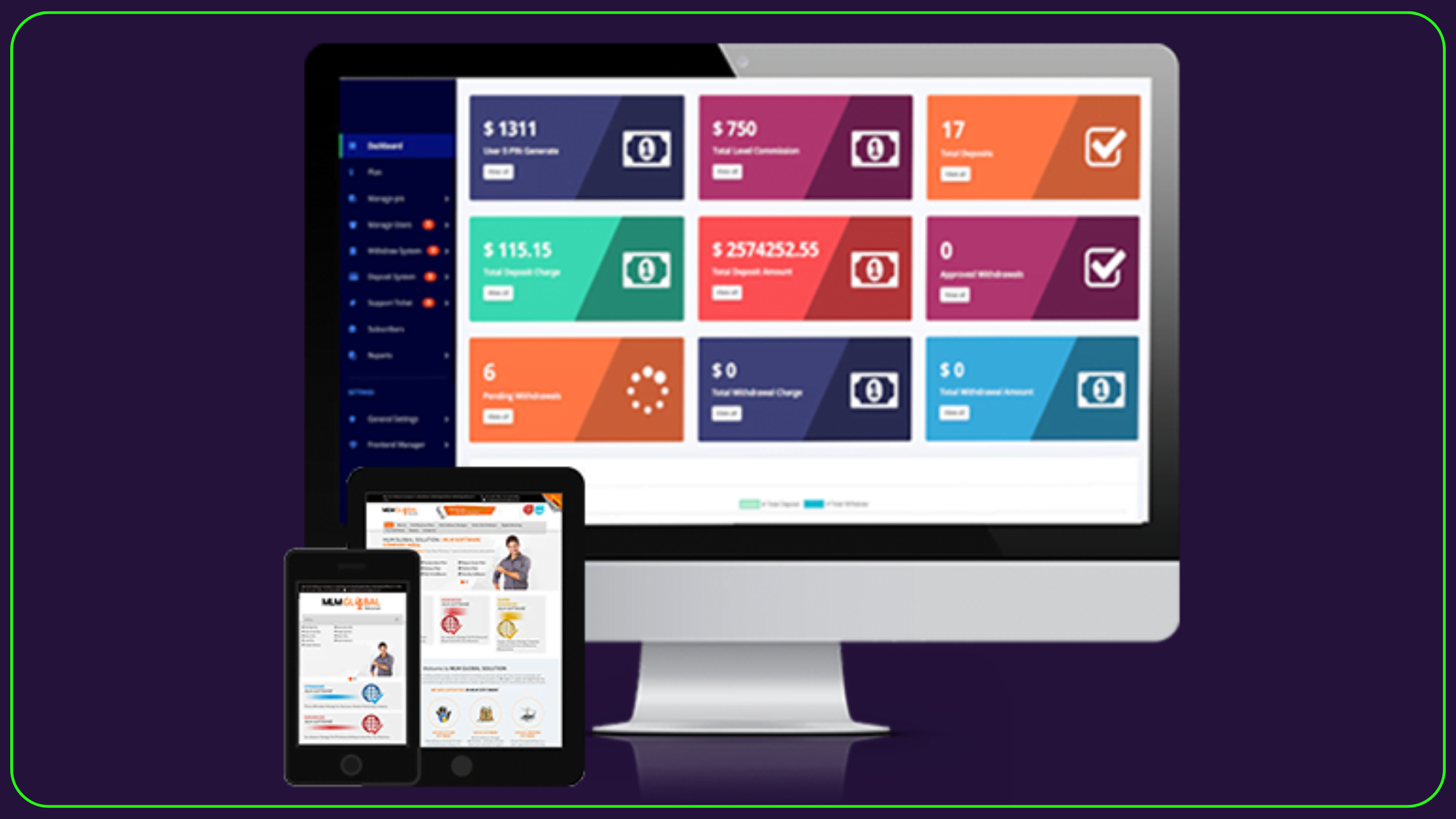MLM Software development
In today’s digital world, Multi-Level Marketing (MLM) has emerged as a very popular business model. MLM not only allows businesses to reach a wide network of customers but also offers individuals an opportunity to build their own business networks. To effectively manage and track their MLM operations, companies rely on MLM software development. In this article, we will explore the benefits and importance of MLM software development in empowering businesses and driving growth.
MLM Software Must Include Features in 2025
In 2025, it will no longer be a choice to have software tailored to your needs. As the multi marketing layer grows digit till its core while further integrating technologies AI and blockchain makes the software a necessity not just an option. Multi-level marketing now more than ever requires specific software to efficiently operate without incurring additional resource cost.
With fast emerging hyper automation trends, businesses now more than ever require software tailored to their needs. Here are the suggested features that I believe will be a no brainer for brand owners in the marketing networks in 2025.
1. Customized Multi-Compensation Plan Support
Custom hybrid models, Matrix, Unilevel, Generation, Boards, and Binary systems are some of the multi-level models you may use. No matter your preference, your software should be able to support multiple compensation plans at once. Multi-compensation support makes it easy to manage several business strategies simultaneously or shift between various structures seamlessly. Scaling becomes frictionless as you can tailor the model based on your goals.
2. Fraud Prevention and Advanced Security
Data breaches come in all shapes and sizes and increase in sophistication means mlm software needs to be backed by multilayered security protocols. These include but are not limited to; end to end data encryption, securing login system with OTP verification or two factor authentication, role bound access control as well as algorithmic fraud detection and prevention.
With these the sensitive business information and user data becomes protected while the trust from the network increases.
3. Advanced analytics and real-time reporting
Analytics and Reporting services which are real-time as well as advanced greatly improve accuracy and insight accessibility. Having access to critical information whenever it is most needed is also crucial for the success of any MLM business. Being able to provide precise insights based on analytics along with accurate sales tracking gives Admins and other Distributors the opportunity to see tangible results of their hard work in real-time through monitoring earnings, teams, sales, and their growth.
4. Supporting Multiple Currencies and Cryptocurrency.
MLM firms have a tendency to operate globally nowadays, aiding with supporting currencies proves invaluable in expansion. In 2025, MLM software will need to facilitate payments in all primary currencies as well as in Bitcoin, Ethereum, and even proprietary company tokens. This ease of payment improves international transaction processing and makes them more manageable while keeping scope open for innovations in finance.
5. E-Wallets Integration
E-wallets grant a touch of innovation in MLM ecosystems by enhancing the functionality of transactions and the management of commissions. Users can manage their funds effectively with instant wallet top-ups, fund transfer, and withdrawal features. Internal payments can be made more securely through e-wallets, reducing reliance on external payment processors.
6. Automated Payment System
Automated payments help save time while ensuring accuracy and reducing error. Various avenues of automated payout systems include bank payments, UPIs, PayPal, and even direct crypto wallets. These options not only facilitate easier payments but improves payment experience of distributors, allowing smoother management of business operations.
7. Cloud Based Hosting
The amount of flexibility provided by the cloud can help optimize the performance of the MLM software. With the cloud, there's no need for sophisticated hardware installations as users and admins can reach their data from any location at any time. This guarantees seamless access to business operations 24/7.
Conclusion
Every new development in the MLM sector creates opportunities for completely new business models and strategies. This means that growth is combined with increased competition, requiring managers to pay more attention to the efficiency of the resources used. In 2025, businesses are shifting to smarter MLM systems that enable secured data access while tracking activity globally in real-time, supporting worldwide MLM business operations. Trust is vital for distributors and customers in order to achieve functional effectiveness, hence selecting MLM software with core features is essential. Ensure that your MLM software has relevant modern tools to adapt to shifting conditions and demands in the market.
How Does MLM Software Development Work?
MLM software development involves several crucial steps to ensure the successful implementation and functionality of the software. Here is an overview of the development process:
- Requirement Analysis: The software development team closely collaborates with the business to understand its unique requirements and objectives. This analysis helps in creating a tailored MLM software solution that meets the specific needs of the business.
- Design and Development: Once the requirements are defined, the development team begins designing the MLM software. This includes creating user-friendly interfaces, implementing necessary features, and ensuring seamless integration with existing systems.
- Testing and Quality Assurance: The MLM software undergoes rigorous testing to identify and resolve any bugs or issues. This phase ensures that the software functions smoothly and meets the highest quality standards.
- Deployment and Training: After thorough testing and quality assurance, the MLM software is deployed and integrated into the business operation. Training sessions are conducted to familiarize users with the software's features and functionalities.
- Ongoing Support and Maintenance: MLM software development is an ongoing process that requires regular updates, maintenance, and technical support. This ensures the software remains up-to-date, secure, and aligned with the evolving needs of the business.
Choosing the Right MLM Software Development Provider
When selecting an MLM software development provider, businesses should consider the following factors:
- Experience and Expertise: Look for a provider with a proven track record in MLM software development. Assess their experience, expertise, and client testimonials to ensure they can deliver a reliable and robust solution.
- Customization Options: Each business has unique requirements. Ensure that the MLM software development provider offers customization options to tailor the software to your specific needs.
- Support and Maintenance: Consider the provider's commitment to ongoing support and maintenance. Look for a team that offers regular updates, technical assistance, and prompt issue resolution.
- Security: MLM software deals with sensitive information, such as sales data and customer details. Ensure that the provider adheres to strict security measures to protect your data from unauthorized access.
Conclusion
MLM software development plays a very crucial role in empowering businesses to effectively manage their MLM operations. From streamlining processes to enhancing communication and providing real-time data, MLM software offers businesses the tools they need to thrive in today's competitive market. By choosing the right MLM software development provider, businesses can harness the power of advanced technology and drive growth in their MLM networks.

 +91 9877752948
+91 9877752948
 +44 7942334242
+44 7942334242

0 Comments
Leave a Comment